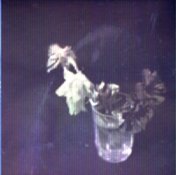yulia_s_rey
Member
Not sure if best category: I'm recently have become interested on modifying an old 35mm VF & a 16mm movie cam camera to make color photos on regular panchromatic stock using a lenticular lens on the focal plane & a three color filter in front of the lens for color separation.
I know Kodacolor 16mm (Process 1 I think) used an etching of fine lines on the back of the base acting as a lenticular lens.
Instead I want a camera using a tricolor filter that can use regular film stock using maybe a plastic lenticular lens (like the 90s cereal box giveaways) on the focal plane, touching the emulsion to emulate this. I wonder can this be possible, anyone else have any experience w/ this? Does this sound possible? Also can one use Red Blue-Green 2 color instead of tricolor, r,g,b filters?
I know Kodacolor 16mm (Process 1 I think) used an etching of fine lines on the back of the base acting as a lenticular lens.
Instead I want a camera using a tricolor filter that can use regular film stock using maybe a plastic lenticular lens (like the 90s cereal box giveaways) on the focal plane, touching the emulsion to emulate this. I wonder can this be possible, anyone else have any experience w/ this? Does this sound possible? Also can one use Red Blue-Green 2 color instead of tricolor, r,g,b filters?









